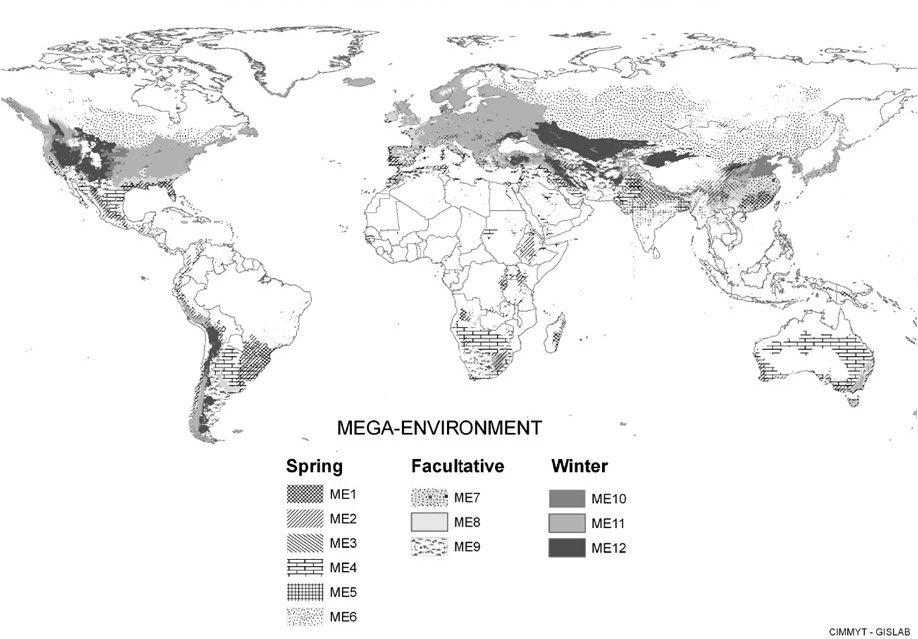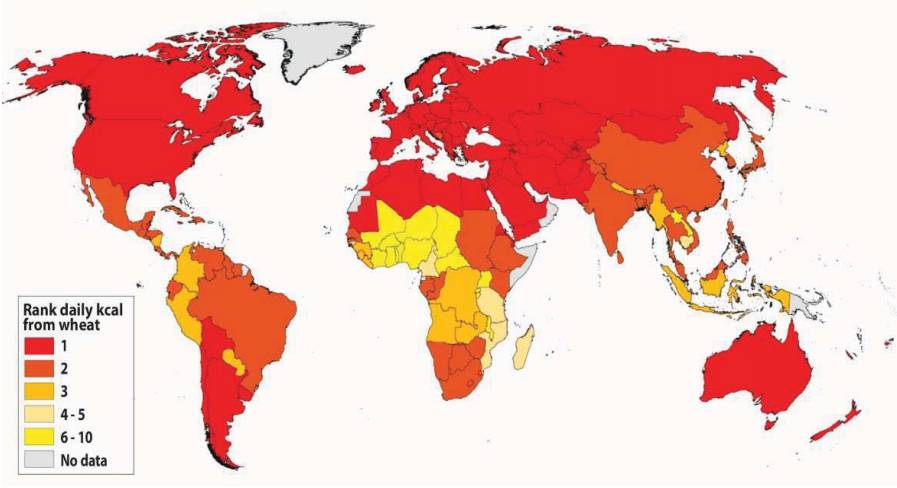Michigan wheat field, mid-July, 2013 [Photo, Micki Glueckert]
Wheat is a cultivated version of wild grasses. According to one site, it probably originated in Iran about 9,000 years ago when durum wheat crossed with wild goatgrass (Aegilops tauschii). Although many of the ancient variants of wheat, including emmer, einkorn, spelt, and Triticum are still consumed today, bread wheat, Triticum aestivum [Triticum from Latin for threshing, and aestivum, Latin for summer] is by far the most important.
The earliest evidence of people eating wheat is from the Ohalo II site, about 23,000 years ago, on the shore of the Sea of Galilee. Charred seeds of emmer were found in a settlement that contained six huts, six open air hearths, and a grave. Cultivated barley also has been found that dates to about 23,000 years ago; the two grains were often grown together.
Fast forward a dozen millenia to Gobekli Tepe, in southeast Turkey, where a site with carved pillars set on terrazzo floors caused great excitement among archaeologists when excavation began in 1994. Settlements of the people who built the pillars have remains of einkorn wheat. Five hundred years after the earliest work began at Gobekli Tepe, a village nearby had begun to domesticate wheat. Other sites in the Middle East, including Abu Hureyra I and II in Syria, Nevali Cori, and Cafer Hoyuk also show evidence of cultivated einkorn and emmer wheat starting as early as about 11,000 years ago. Because new sites are always being discovered, it is impossible to say for sure which site holds the honor of being "first." Within a thousand years or so, cultivated wheat appeared in a number of places in the Middle East -- Iraq, Iran, Persia, and more.
From there, wheat spread to China, Russia, Central Asia, much of Europe, and northern Africa and Egypt in the lands around the Mediterranean. It traveled over land, and by sea, in the holds of ships, and the bags carried by people seeking a better life in a new land.
By the time that the Roman Empire was at its peak, nearly a thousand years later (around 250 CE) it relied on Spain, Sicily, Sardinia, Egypt, and northern Africa, for most of its wheat. A Stanford web site (ORBIS) allows the viewer to enter variables like mode of transportation, time of the year, and costs and calculate how long it would take a kilogram of wheat to be carried from London to Constantinople, or elsewhere in the Empire. Empires of Food (Faser and Rimas) describes how the Romans fed themselves, and what happened when they finally could not, because of climate change, and political issues.
Michigan chickens eating wheat. [Photo by Micki Glueckert]
As Europeans explored the Americas and Australia, they took wheat with them. Its range today goes from ". . . 260 m below sea level (Jordan Valley) up to 4,000 m (Tibetan plateau)." [Kew 2013]. Farmers cultivate it on every continent except Antarctica, with China and India being the largest producers. The United States is third, followed by France, Russia, Australia, Canada, Pakistan, Germany, and Turkey.

Map from Wheat Atlas, showing where wheat is grown. Note that much of the U.S. grows winter wheat, as does much of Europe, the Middle East, and parts of Russia. The "facultative" areas grow spring wheat that is sown in the fall rather than in the spring; all of them are moderately cold climates (small parts of Chile, China, the Middle East, Central Asia and North Africa).
Even if a particular area grows little if any wheat, much of the world's population depends on it as a major source of calories and protein. Graphic from Wheat Atlas.

Michigan wheat field, mid-July 2013. [Photo, Micki Gluekert]
Wheat will grow in many environments, but prefers drier areas with ten to thirty inches of rain a year. In the United States, the Great Plains -- Kansas, Nebraska, Minnesota, and Eastern Washington state are the major places for amber waves of high-gluten bread wheat. Fields in Ohio and several Eastern states produce more of the low-gluten spring wheat for cakes and pastries.
Wheat still rules in the Roman diet. Roman bakery, September 2013. [Photo, TW Carns]




No comments:
Post a Comment